The Colours of Memory
By Nusrat Khawaja | Art Line | Published 6 years ago
Imagine a world of kaleidoscopic colours flattened into segments of disparate hues. This vibrant field resembles an aerial view of the ground where geometries of shape and colour acquire distinct edges. This kaleidoscopic landscape is quintessential Moeen Faruqi. In his latest series of paintings shown at Koel Gallery under the title New Memories, Moeen parachutes the viewer onto a panorama of bold, enigmatic colours.
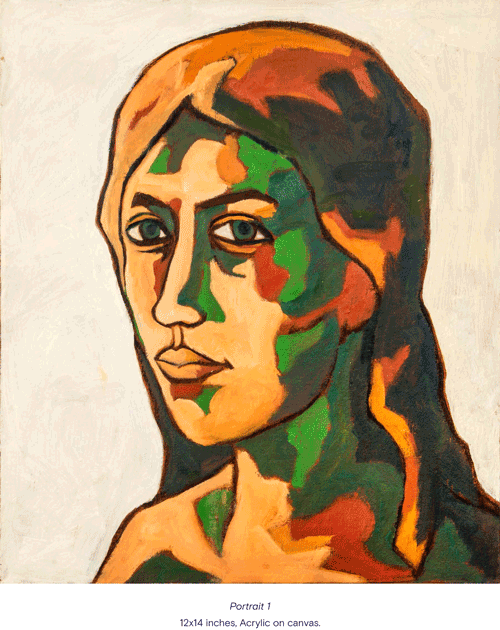 The title is somewhat paradoxical. The “new’’ memories are re-visitations of old thoughts and memories that have emerged for the artist in the wake of grief, as he lost his wife of 29 years last year. Taking solace from painting becomes “a sort of new beginning, a new way to look at old things.’’ The essence of memory is experience which, like the taijitu symbol which contains both yin and yang, contains the acts of remembrance and forgetting. Moeen has dedicated the show to the memory of his late wife, Mahvash.
The title is somewhat paradoxical. The “new’’ memories are re-visitations of old thoughts and memories that have emerged for the artist in the wake of grief, as he lost his wife of 29 years last year. Taking solace from painting becomes “a sort of new beginning, a new way to look at old things.’’ The essence of memory is experience which, like the taijitu symbol which contains both yin and yang, contains the acts of remembrance and forgetting. Moeen has dedicated the show to the memory of his late wife, Mahvash.
The visual artist Zeerak Ahmed curated the show by selecting material from three years of work. She included paintings that indicate an evolution in the artist’s style, such as the unusual trapezoid-shaped canvases that are worked in a limited colour palette in the ‘Moment’ series.
Portraiture remains a dominant feature of ‘New Memories.’ The faces are painted with strong lines. The definition of contours is created by colour rather than light-and-dark shading. The expressionist use of colours (blue, green, orange, etc.), as in ‘Portraits 1, 2, 3 and 4’ is reminiscent of the work of the Fauve artists at the beginning of the 20th century, who moved away from colour realism and the illusion of three-dimensionality and substituted flat patches of colour to create a new kind of pictorial space that discarded depth and recession.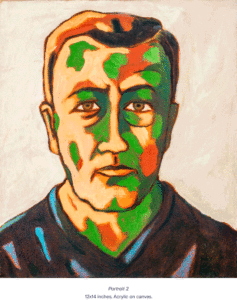
Stylistic influence, however, should not overpower the personal syntax that defines the work. Moeen Faruqi has presented a memory-scape of sorts. Just as memory continuallyrefreshes itself and reconstitutes detail in recurring and even unexpected ways, so does the imagery in the series. There are references in Moeen Faruqi’s work to the city with titles such as ’95 Jamshed Road’ and ‘Clifton Bridge’ for he has been and remains preoccupied with the urban metropolis. Other works such as ‘Trilogy of Angst,’ painted in deep blues against an 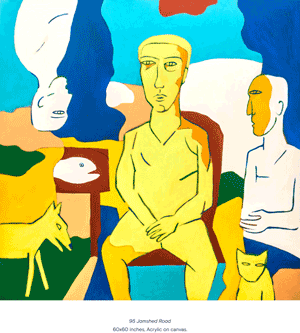 orange background, reflect a mood rather than a narrative.
orange background, reflect a mood rather than a narrative.
The mood-related idioms may be linked to the Modernist lineage of Pakistani painting that connects with the expressive qualities found in the paintings of Zubeida Agha. Her simplified and biomorphic imagery, infused with deep colour, moved away from realism in order to express emotion and intuition. Echoes of this pioneering work are apparent in Moeen’s art.
Moeen is a keen listener of jazz and the influence of this intuitive genre spills onto his canvases. The painting titled ‘Rapture, rupture,’ with its colour repetition and bold vibrancy, has enormous percussive energy and can easily be imagined as a jazz improvisation.
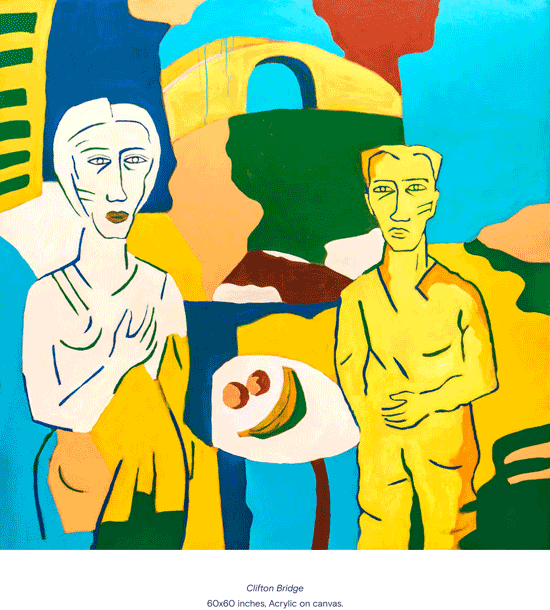
The stark colours and boldly outlined figuration of faces, animals and objects in Moeen Faruqi’s paintings are considered sufficient unto themselves to tell their story. There is a narrative to the composition, but it is subtle and open-ended. The work of interpretation is left to the determination of the viewer. Clearly the work dwells on the human condition. The wide-eyed, outwardly gazing faces seem to be staring into an existential morass rather than at a specific encounter with the viewer. The bold certainty of shape that characterises Moeen’s imagery contrasts with the philosophical uncertainty that is implied by the expressions on the faces of people who inhabit these paintings.
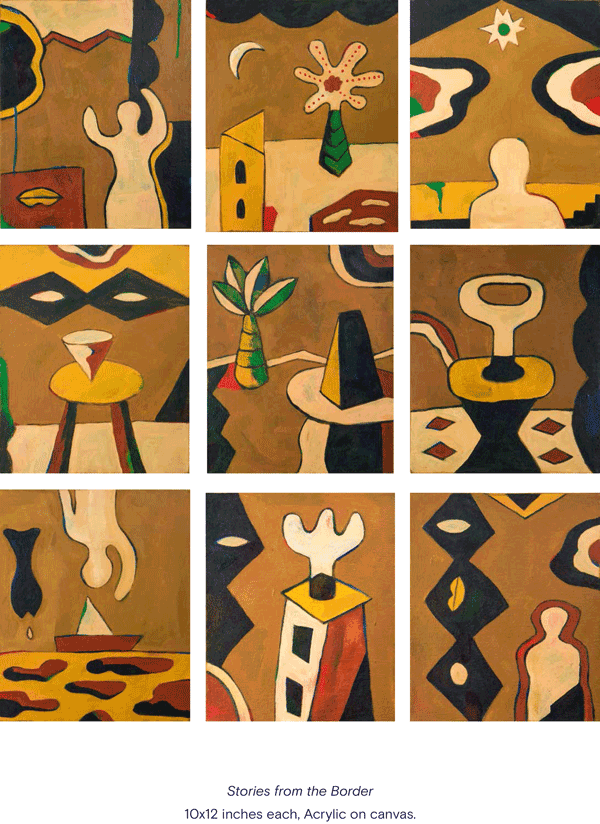 Uncertainty also begets ambiguity in works such as ‘Stories from the Border.’ The six panels assemble simplified forms of landscape, human figures, fish and buildings. The outflowing of stream-of-consciousness images is evident. Ambiguity also connects to the idea of dreams and memory, both of which have the power to evoke emotion through layered and enigmatic imagery.
Uncertainty also begets ambiguity in works such as ‘Stories from the Border.’ The six panels assemble simplified forms of landscape, human figures, fish and buildings. The outflowing of stream-of-consciousness images is evident. Ambiguity also connects to the idea of dreams and memory, both of which have the power to evoke emotion through layered and enigmatic imagery.
The memories depicted in the paintings are fresh, raw even as they pulsate with energetic colour. When understood in the context of emotions, these fields of colour become psychological landscapes and colour becomes a code or pathway to entering their internal logic.


